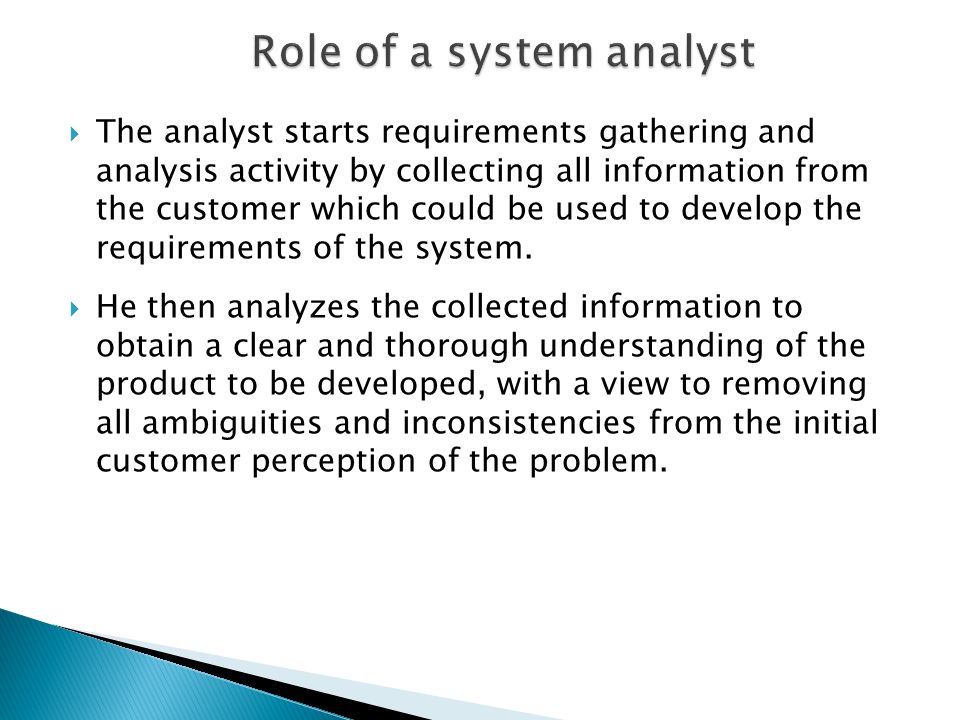Introduction
Software development is a complex process that requires a coordinated effort from various professionals to deliver a product that meets both business and user requirements. Among the key players in this process, the systems analyst stands out as a linchpin, orchestrating the translation of business needs into functional software solutions. In this blog post, we will delve into the multifaceted role of a systems analyst in software development projects and shed light on the vital contributions they make.
Understanding the Systems Analyst’s Role
Requirements Elicitation and Analysis
At the heart of any software project lies the need to identify and comprehend the requirements that will drive the development process. Systems analysts are responsible for conducting extensive interviews, surveys, and workshops with stakeholders to gather these requirements. This involves not only understanding what the business wants but also discerning unspoken needs and potential future requirements. Once gathered, these requirements are meticulously analyzed and documented to serve as the blueprint for the development team.
System Design and Architecture
After gathering and analyzing requirements, systems analysts move on to designing the software system. They create detailed system specifications, define the system’s architecture, and design data models and user interfaces. This stage involves making critical decisions about technology stack, scalability, and security, all of which significantly impact the success and longevity of the software.
Communication Bridge
One of the most crucial roles a systems analyst plays is that of a communication bridge. They act as intermediaries between non-technical stakeholders and the development team. By translating complex technical jargon into plain language, systems analysts ensure that everyone involved in the project has a clear understanding of progress, challenges, and potential roadblocks.
Quality Assurance and Testing
Systems analysts are also involved in quality assurance and testing processes. They create test plans and test cases to ensure that the developed software meets the specified requirements. This helps identify and rectify defects early in the development cycle, reducing the likelihood of costly post-release fixes.
Change Management and Adaptation
In the dynamic world of software development, change is inevitable. Systems analysts are adept at managing change by evaluating the impact of requested changes, revising requirements and design as needed, and communicating these changes effectively to all stakeholders. This agility is crucial in ensuring that software remains aligned with evolving business needs.
Collaboration and Teamwork
Successful software development projects are the result of effective teamwork, and systems analysts are central to fostering collaboration. They work closely with developers, project managers, quality assurance teams, and business stakeholders to ensure that everyone is on the same page. This collaboration ensures that the final product aligns with both technical feasibility and business objectives.
Adapting to Agile and DevOps
The advent of Agile and DevOps methodologies has brought significant changes to the software development landscape. Systems analysts have had to adapt to these methodologies, which emphasize iterative development, continuous integration, and rapid deployment. In Agile teams, the systems analyst often takes on the role of a product owner or works closely with one, ensuring that development efforts are aligned with business priorities.
Tools of the Trade
To excel in their roles, systems analysts rely on a suite of tools and software. Requirements management tools like JIRA, Confluence, or Trello help in capturing and tracking requirements. Modeling tools such as Microsoft Visio or Lucidchart aid in creating visual representations of system designs. Collaboration and communication tools like Slack or Microsoft Teams facilitate effective teamwork and information sharing.
Challenges Faced by Systems Analysts
While the role of a systems analyst is rewarding, it comes with its fair share of challenges. Some of these challenges include:
Managing Scope Creep: As the liaison between stakeholders and the development team, systems analysts must be vigilant in preventing scope creep, which can lead to project delays and budget overruns.
Balancing Technical and Business Skills: Systems analysts need to possess a unique blend of technical expertise and business acumen to translate requirements effectively.
Staying Updated: The fast-paced nature of technology means that systems analysts must constantly update their knowledge and skills to remain relevant in the field.
Dealing with Ambiguity: Gathering requirements can sometimes be a challenging task, especially when stakeholders are unsure about what they need. Systems analysts must navigate this ambiguity and extract valuable insights.
Conclusion
In the ever-evolving landscape of software development, the role of the systems analyst remains pivotal. They are the architects who transform business needs into functional software systems, the communicators who bridge the gap between technical and non-technical stakeholders, and the guardians of quality and alignment. As software projects continue to grow in complexity and importance, the systems analyst’s role will only become more critical in ensuring their success.
Whether you’re a budding systems analyst or someone interested in understanding the behind-the-scenes workings of software development, appreciating the multifaceted role of the systems analyst is key to unlocking the potential of any software project.




